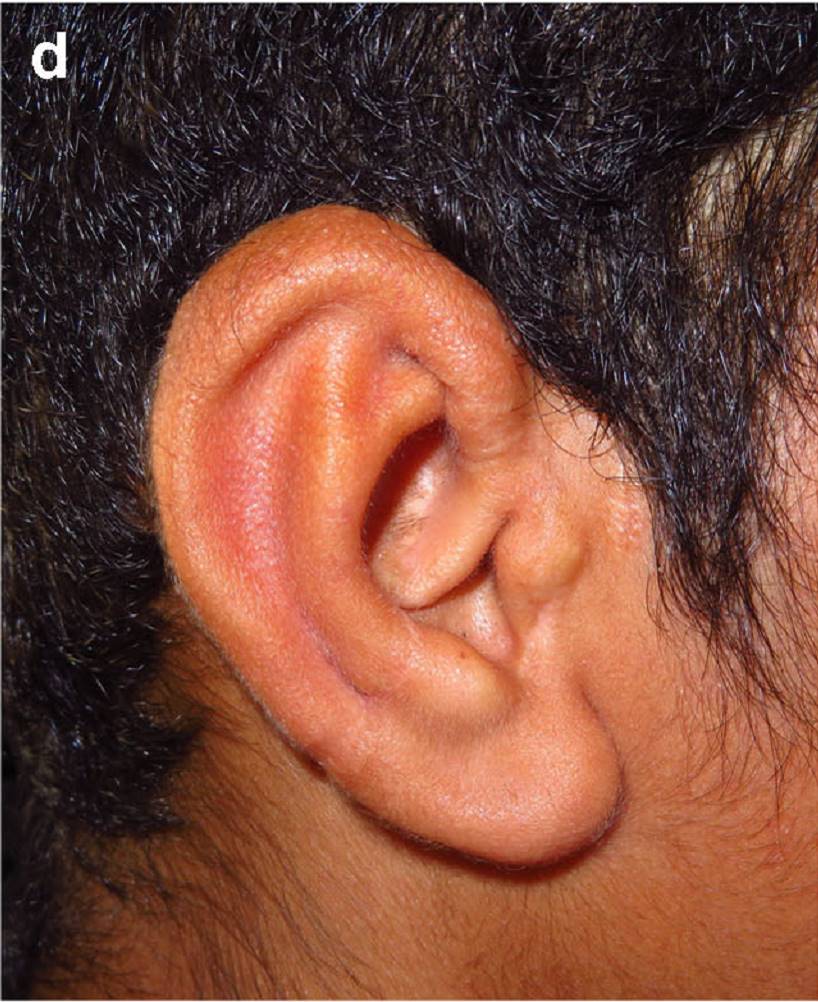Background Ear reconstruction for microtia is a great challenge in plastic surgery. Autogenous costal cartilage has remained the
material of choice for framework fabrication. We describe our preferred technique and provide several refinements which have
been developed over years to improve the outcome and minimize complications, based on experience with 406 cases.
Methods Esthetic outcome scoring was performed by evaluating all subunits of the reconstructed ears as well as the overall
integration of the ear with the face (15 esthetic parameters). These were graded, using a 5-point ordinal scale from1 (very poor) to
5 (very good). The course of improvement of the overall esthetic score was assessed using one-way ANOVA test with Bonferroni
post hoc analysis.
Results The overall complication rate was 15%.Wire extrusion was the most common (12.8%). The rate of revision procedures
was 11.8%. The helix and concha had the highest esthetic score (3.4 each). The overall esthetic score was 3.2 on average. The
overall score showed statistically significant improvement after the first 50 cases (p = 0.02) and another increase after performing
250 cases. The difference between the esthetic score of the first and the last subgroup of cases is highly significant (p <0.001).
Conclusions Autologous ear reconstruction is a complex surgery with inevitable learning curve. Undertaking an adequate
training is advised to achieve pleasing results. Having a regular high volume case load is essential to achieve significant
improvement in outcomes. The goal of having nationally designated ear reconstruction units is highly recommended.
Level of evidence: Level IV, therapeutic study.

